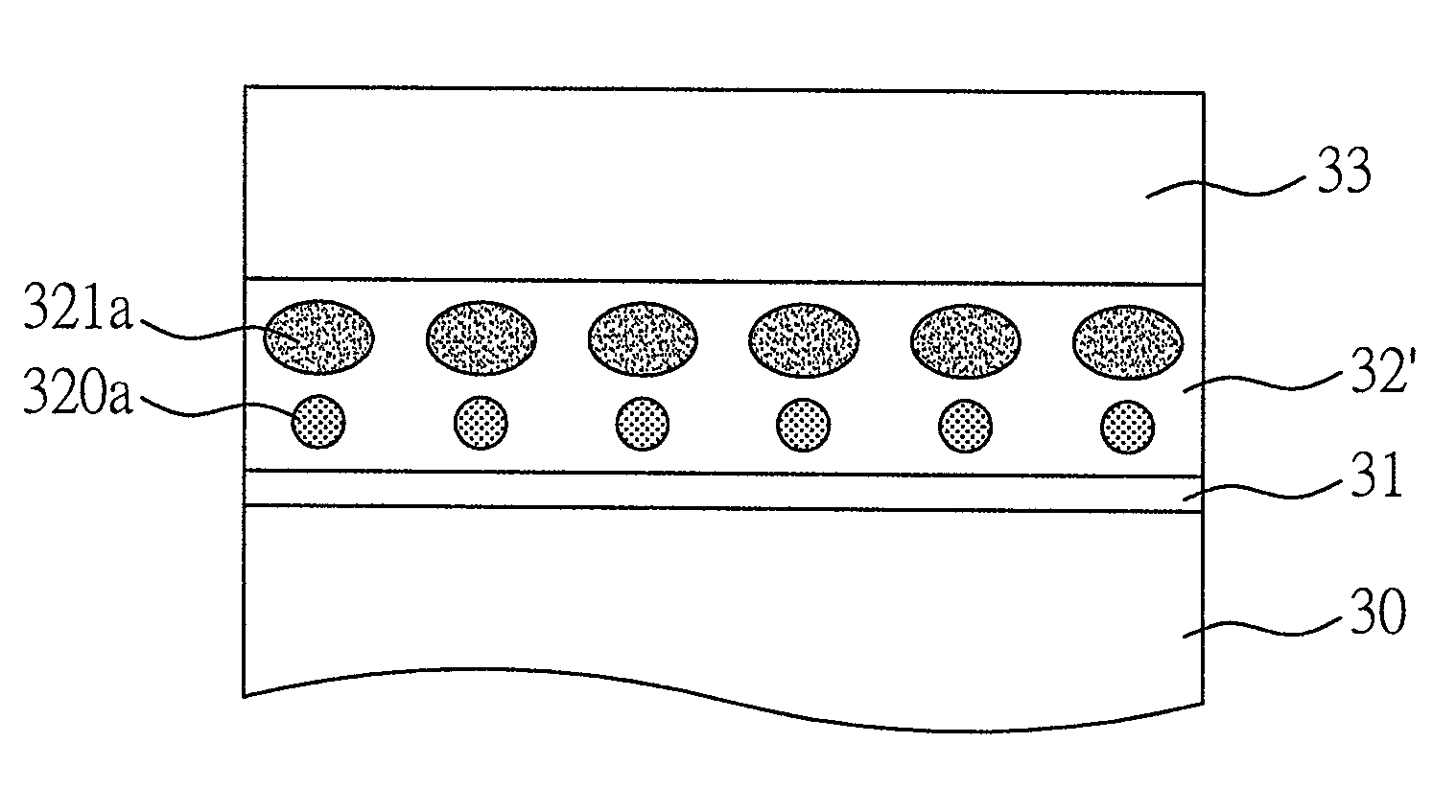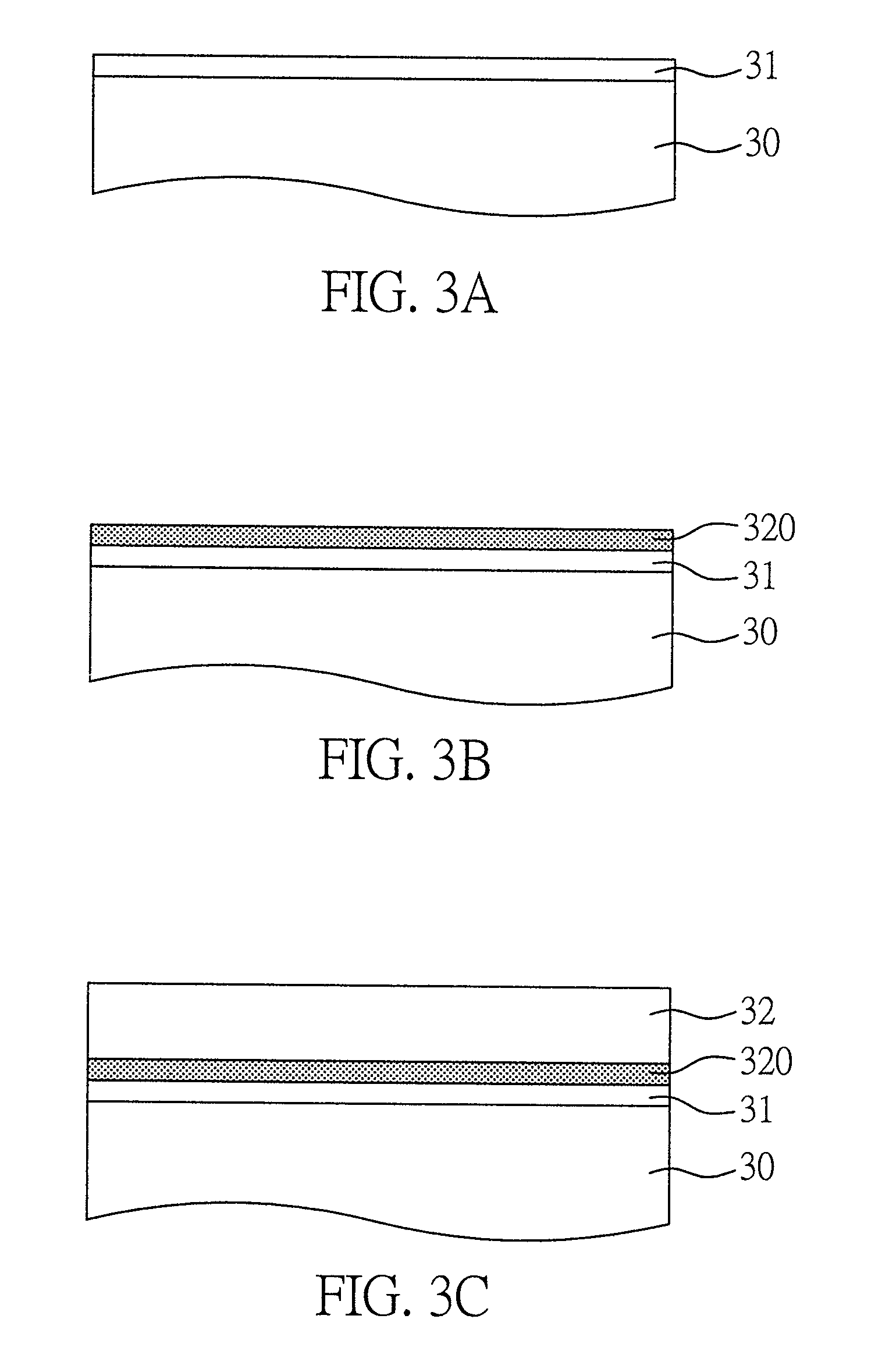Method for fabricating self-aligned double layered silicon-metal nanocrystal memory element
a nanocrystal memory and silicon-metal technology, applied in the field of memory devices, can solve the problems of insurmountable difficulty in thinning-down process, difficult to store charges, and own limit of thinning-down process, and achieve the effect of enhancing the charge retention rate of nanocrystal memory, high work function, and increasing the potential barrier of nanocrystals
- Summary
- Abstract
- Description
- Claims
- Application Information
AI Technical Summary
Benefits of technology
Problems solved by technology
Method used
Image
Examples
Embodiment Construction
[0036]The present invention, which relates to a self-aligned double layered silicon-metal nanocrystal memory element, a method for fabricating the same, and a memory having the memory element, is herein illustrated with the specific embodiments and drawings.
[0037]FIGS. 3A through 3G demonstrate a method for fabricating a self-aligned double layered silicon-metal nanocrystal memory element of the present invention.
[0038]Referring to FIG. 3A, first of all, a tunnel oxide layer 31 is formed on a silicon-made substrate 30 by thermal oxidation known in the prior art. The tunnel oxide layer 31 may be made of silicon oxides or other dielectric materials and preferably 5 nanometers in thickness. The formation of the tunnel oxide layer 31 is an application of technology known in the prior art, and the constituent material is also known in the prior art, and thus it is not herein discussed in detail.
[0039]Moreover, referring to FIG. 3B, a polysilicon layer 320 is deposited on the tunnel oxide...
PUM
 Login to View More
Login to View More Abstract
Description
Claims
Application Information
 Login to View More
Login to View More - R&D
- Intellectual Property
- Life Sciences
- Materials
- Tech Scout
- Unparalleled Data Quality
- Higher Quality Content
- 60% Fewer Hallucinations
Browse by: Latest US Patents, China's latest patents, Technical Efficacy Thesaurus, Application Domain, Technology Topic, Popular Technical Reports.
© 2025 PatSnap. All rights reserved.Legal|Privacy policy|Modern Slavery Act Transparency Statement|Sitemap|About US| Contact US: help@patsnap.com



